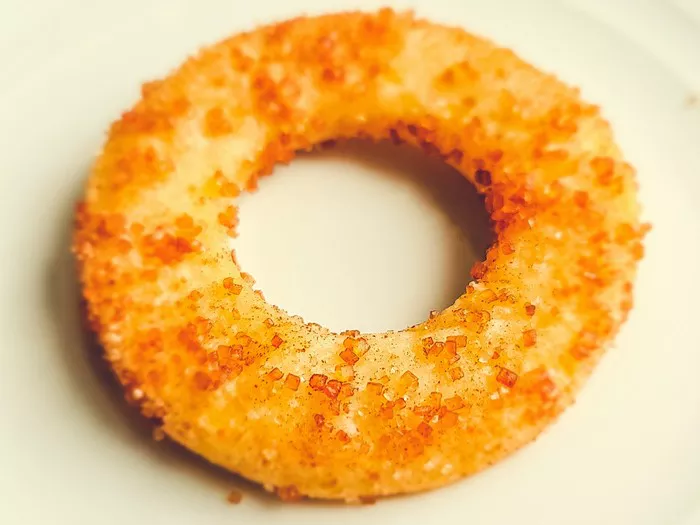Fried donuts, with their irresistible aroma and delightful texture, are a beloved treat enjoyed worldwide. Achieving the perfect donut involves mastering several key factors, with temperature being among the most critical. In this comprehensive guide, we delve into the nuances of donut frying temperatures, exploring how they affect everything from texture to taste.
Understanding the Fundamentals: Why Temperature Matters
At its essence, frying is a delicate balance of heat and timing. Temperature directly influences how ingredients interact with the frying medium (typically oil) and consequently affects the final product’s texture, appearance, and flavor. For donuts, achieving the ideal frying temperature ensures a crispy exterior, a fully cooked interior, and that sought-after golden hue.
The Science Behind Donut Frying
Frying involves complex chemical reactions that transform raw dough into a delectable treat. When the dough hits the hot oil, moisture evaporates rapidly, creating steam that pushes against the dough’s surface. This initial burst of steam helps set the outer layer, preventing excessive oil absorption while creating the characteristic crispy crust.
Choosing the Right Temperature Range
The optimal frying temperature for donuts typically falls between 350°F to 375°F (175°C to 190°C). Within this range, the dough quickly forms a crust without becoming greasy or undercooked. Temperatures below this range can result in oily, heavy donuts, as the dough absorbs more oil before forming a crust. Conversely, exceeding this range risks burning the exterior before the interior cooks through.
Factors Influencing Temperature Choice
Several factors influence the exact temperature at which you should fry donuts:
Type of Dough: Different dough recipes respond differently to heat. Yeast-raised doughs, for example, benefit from slightly lower temperatures to ensure they cook through evenly without burning.
Size and Shape of Donuts: Larger or thicker donuts may require slightly lower temperatures to cook through without burning the exterior.
Type of Oil: Each type of oil has a different smoke point and flavor profile, affecting both frying temperature and final taste.
Techniques for Maintaining Consistent Temperature
Consistency is key to producing uniform, perfectly fried donuts. Consider these techniques:
Thermometer Use: Invest in a reliable frying thermometer to monitor oil temperature accurately.
Adjusting Heat: Be prepared to adjust the heat source to maintain a steady temperature throughout the frying process.
Batch Size Management: Avoid overcrowding the fryer, which can lower the oil temperature and result in unevenly cooked donuts.
Common Temperature-Related Issues and Solutions
Even with careful attention, challenges can arise during donut frying. Understanding these issues and their remedies is crucial:
Oil Absorption: If donuts absorb too much oil, check that the temperature isn’t too low or that the oil hasn’t degraded.
Uneven Browning: Fluctuating oil temperature or overcrowding the fryer can lead to unevenly browned donuts. Adjust the heat and fry smaller batches for consistent results.
Burnt Exterior: Excessively high temperatures or prolonged frying times can scorch the exterior while leaving the interior undercooked. Reduce the temperature and adjust frying duration accordingly.
SEE ALSO: A Comprehensive Cost Analysis of First Watch Franchise
Advanced Techniques and Temperature Adjustments
For seasoned bakers and chefs, mastering temperature control opens doors to creativity:
Multiple Frying Stages: Some recipes call for initial frying at a higher temperature to set the crust, followed by finishing at a slightly lower temperature to ensure thorough cooking.
Oil Substitutions: Experimenting with different oils can impart unique flavors and textures to donuts. Be mindful of each oil’s smoke point and adjust temperatures accordingly.
Safety Considerations
Frying involves hot oil and requires caution to prevent accidents:
Oil Handling: Always handle hot oil with care to avoid burns or spills.
Fire Safety: Have a fire extinguisher nearby and be aware of fire hazards when working with cooking oil.
Conclusion
Achieving the perfect fried donut hinges on precise temperature control. By understanding the science behind frying, choosing the right temperature range, and employing proper techniques, you can consistently create donuts that are crispy, golden, and utterly delicious. Whether you’re a home baker or a professional chef, mastering the art of donut frying will elevate your culinary prowess and delight those fortunate enough to indulge in your creations.

